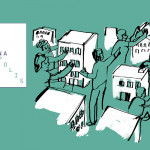
Barcelona Metròpolis takes on a new era. Visit the new website here >>

Barcelona Metròpolis takes on a new era. Visit the new website here >>

Solitude can be enjoyed or suffered, and we can even feel alone when surrounded by others. In Barcelona, where there are over 100,000 individuals over the age of 60 living alone, there are also a number of support programs for seniors. We’ll interview some of the protagonists and beneficiaries of these services, who’ll show us how something as simple as going out in good company can help us regain our love of life.
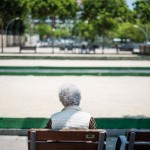
From an evolutionary perspective, loneliness has been defined as a desire for social interaction. It’s a psychological and social condition that includes emotional aspects, cognitive aspects and a discomfort that we should see as the result of insufficient social support. Loneliness reflects our vulnerability and our need for others.
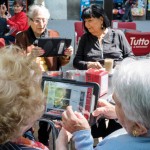
Living alone does not necessarily mean suffering from that, but over time social networks are weakened or lost, and people feel increasingly excluded and socially isolated. The situation is worse in the case of women, most of them on low pensions. Barcelona addresses the problem of loneliness among elderly people through public and charitable initiatives.
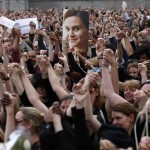
The problem of loneliness has become so acute in the United Kingdom that at the start of the year the Government decided to focus one specific department on combating this scourge of the 21st century, and set up a kind of Ministry for Loneliness.
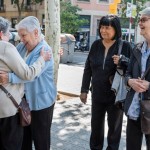
People’s life expectancy varies according to their gender, the neighbourhood where they live, where they work or their level of education. One of the factors that can influence their state of health is loneliness.
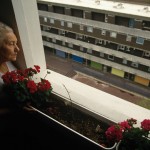
Over the course of our lives we experience moments of liberating solitude, and others when, lost in a sea of unwanted isolation, all we can do is to try to keep afloat. In an ageing society like ours, people often have loneliness as their companion during their final years.

Digital communication has greatly increased our capacity to interact with others. However, one element radically affects the relationships we can establish virtually: physical absence. They lack the empathy and all the social and personal knowledge transmitted by our bodies.

Barcelona, like other European cities, is subject to intense gentrification pressures in some of its most emblematic neighbourhoods. In this dossier, with the help of leading specialists in urban issues, we review the particularities of this phenomenon.

Neoliberal policies have transformed traditional urban spaces for socialising, which have been taken over by mercantilism. Gentrification, far from being neutral, is in fact a process that is defined in terms of class and therefore of conflict.

To prevent residents being driven out of their neighbourhoods, Barcelona must follow three courses of action: civilise the property market, build up public housing stock with a well-balanced geographic distribution and turn to social co-production of mixed residential solutions.
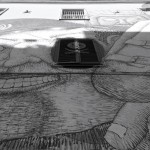
Here we describe the experiences, new or established over time, of eight cities that are standing up to the phenomenon of gentrification.

() Diversos municipis que han emprès iniciatives de creació d’espais verds han generat noves desigualtats o han exacerbat les que ja existien. Com abordar els efectes indesitjables i inequitatius de l’urbanisme verd?

Gentrified neighbourhoods are an object of desire for many tourists and, at the same time, the presence of tourism reinforces gentrification processes. Far from being a seasonal phenomenon located in specific spaces, tourism competes for resources with the other citizens, leading to the displacement of the resident population.
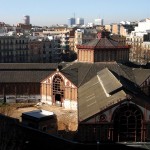
() Situats en la disjuntiva entre decadència i renovació, els mercats tradicionals es poden convertir en eines poderoses de gentrificació quan, apostant per una modernització radical, modifiquen els usos del seu espai juntament amb l’oferta de productes i els preus vigents.

Women in particular suffer the real-estate violence generated by gentrification. Public regulation of the property market ought to incorporate gender as an indicator of vulnerability. At the same time, labour legislation should be changed to protect reproductive and care work.

La Ribera, Gràcia, Poble-sec, Sant Antoni and the area around the Rambla del Poblenou are the most gentrified areas in Barcelona, according to the results of a pioneering study that will help develop preventive policies.

There are laws guaranteeing access to housing as an essential right over any other right and that give the public administration ample means to intervene in its defence.
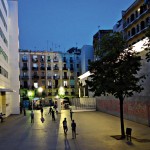
Thanks to municipal leadership and the work of neighbourhood representatives, the regeneration of Ciutat Vella, which got under way in 1980, has successfully tackled the problem of urban desertification that has affected other European city centres.

Barcelona’s Mental Health Plan emphasizes children and young people, as these are the groups most vulnerable to psychological suffering and illness. Barcelona is the only city in Spain and one of only a handful in Europe with a project of this kind.

Silvestra Moreno promoted the first Association of Family Members of the Mentally Ill of Catalonia, and she later founded the Mentally Ill of Catalonia Foundation, which recently celebrated its 25th anniversary. In 2000, she was awarded the Creu de Sant Jordi for her fight to defend those affected by mental illness.

One of every four Barcelonians has a mental health problem. The most common are anxiety and depression; of those that require hospitalization, the most common are bipolarity and schizophrenia.
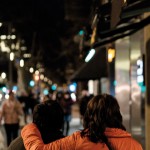
Mental suffering and illness increased in frequency among the population of Barcelona from 2000 to 2016 as compared to previous periods. Mental health problems also affect women to a greater degree.
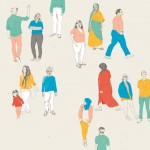
Barcelona is one of the cities in Europe that has been the most understanding of the drama of the refugees, and it has also been a magnet for immigration in southern Europe. The communities of people from abroad living in Barcelona today are bigger and more diverse than ever.

Today, Barcelona houses more foreigners than newcomers from other parts of Spain. Globalization has irreversibly changed the demographic face of a city that became a magnet for migratory movements from all around the world this turn of the century.

In contrast to what happened with other migratory communities, the economic recession didn’t cause the sacrificed, money-saving and hard-working Chinese inhabitants of Barcelona to return home or leave for other destinations: the immense majority of them remained. The recession only slowed their arrival.

Whether we’re buying food after hours, catching a taxi, getting a shawarma in the Old City or buying a drink from a street vendor, it’s very probable that we’re interacting with members of the Pakistani community. But what do we know about these discrete new Barcelonians?
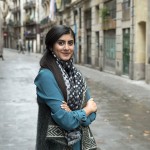
Since my arrival in Montcada i Reixac in 2006, the number of Pakistani women living in Barcelona has increased considerably. Nevertheless, the problems they face have not changed much.

Citizens of Moroccan origin make up a very large community as a result of the migratory movements of the seventies. Morocco is just an hour and a half away by plane, but sometimes it seems much farther away. This distance is imaginary, and most likely comes from cultural differences.

Latin American countries share a strong tendency towards participation in associations, and this can be seen in the significant number of organizations created by citizens originally from the other side of the Atlantic. The presence of females is very significant: Latin American women have become key to the maintenance of the welfare of the native population.

Except for the Chinese and the Italians, the volume of immigrants in Barcelona has stabilized, and many people —largely as a result of the recession and the rise in the cost of living— have decided to move to another town or to return home. Under these circumstances, other nationalities that had not been as well-represented have become more visible, like the Bengalis, the Armenians or Hondurans.
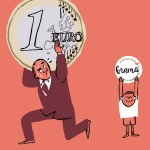
Complementary currencies are exchange systems set up alongside official ones to advance social, environmental or economic goals, highlighting local assets and resources that are not part of the usual exchange circuits. They also pose an alternative—and a challenge—to traditional banking,

Complementary currencies are systems created on the fringes of official currencies to promote economic, social and environmental projects. They also assign value to local activities and resources that are not found on ordinary exchange circuits.
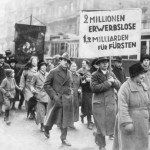
The Austrian town of Wörgl’s local currency reactivated production and internal demand during the Great Depression. The Swiss WIR business cooperative’s credit system is another successful example of a complementary currency. WIR and the Kenyan mobile payments system, M-Pesa, are the only present-day examples that are having a macroeconomic impact.

Time banks are spaces where skills can be exchanged without any money changing hands. Instead, the hours people spend providing services to others are deposited in the bank and withdrawn in the form of other services they need.

The first eco-networks appeared in Catalonia around 2009-2010. These innovative initiatives entailed the use of local currencies, which in turn promoted economic transactions operating outside the dominant monetary system. They are not-for-profit networks of citizens who exchange goods and services that are paid for in social currency.

Ecopolis is a game that takes its inspiration from Monopoly, but instead of teaching us how to speculate, it tries to help us understand how the use of complementary currencies can improve a town’s economy.

Santa Coloma de Gramenet has issued a social currency it calls the grama, with the object of incentivising local trade and strengthening residents’ commitment to their town. Inspired by this and other projects, Barcelona City Council is preparing a test local currency for introducing to the Besòs neighbourhoods.
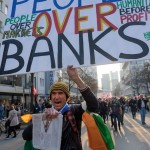
The digital revolution has eliminated intermediaries from most economic sectors, apart from the area of finance where they have strengthened their grip. The ability to create currency — the exclusive domain of banks — is the primary reason for this anomaly. The solution is to develop new currency-creation mechanisms.

To house the history section, the City Council bought and restored the Casa de l’Ardiaca, which in 1922 opened its doors as home of the new Historical Archives of the City, headed by Duran i Sanpere himself. We are commemorating these one hundred years in the life of the centre with a dossier.

The country’s archives were just as or even more vulnerable to the events of war than were human lives at the begining of the Spanish Civil War. Many were destroyed, particularly if they were of a religious or bourgeois nature and in the event that paper pulp was required for the printing of newspapers.

Duran i Sanpere left a written testimony of the operation, whose reading allows us to grasp the enormous dimensions of his work.

The new archive facility will become a first-rate civic and cultural information centre, with the development of a city-wide programme of activities and close working relationships with neighbourhood study centres and workshops.
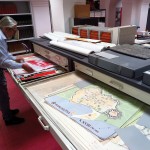
Alongside the Historical Archive of Barcelona (AHCB), civil society organisations have also done invaluable work to preserve the historical memory of the city.
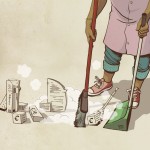
Have you given any thought to how we use the city and the public space? Men and women make use of the city in different ways: men move around the city more for occupational reasons (19.4%), while for women it’s primarily for family reasons (15.6%) with occupational concerns in second place.
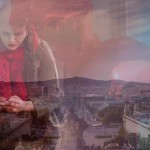
Efforts to refocus urban planning to take into account the human aspect place a special emphasis on the gender perspective, the aim being to obtain an equal use of the city based on the diversity of gender, ethnic origin, age or occupation of the community.
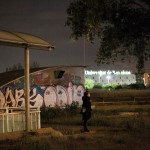
Mobility and safety are the two issues that most affect the everyday life of women who work in the metropolitan area at night, especially those that use public transport or go on foot, according to a participative study conducted by Col·lectiu Punt 6.
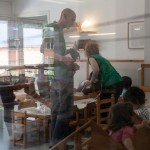
Rethinking the city from a feminist perspective means no longer creating spaces on the basis of production rationales that are socially and politically restrictive and, instead, starting to think about environments that place a greater emphasis on the people who use them.

In 2015, organisations and groups in the Poble-sec neighbourhood created a protocol – Guidelines for feminist festivals – to prevent and take action against gender-based violence at street festivals. The ultimate goal is to extend those guidelines to include every type of recreational space in the neighbourhood and in everyday life.
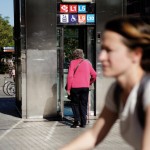
Metropolis Women, the strategic network run by the Barcelona’s Department for Feminism and LGTBI, is working to mainstream the gender perspective within the World Association of the Major Metropolises, which has 138 member cities around the world.